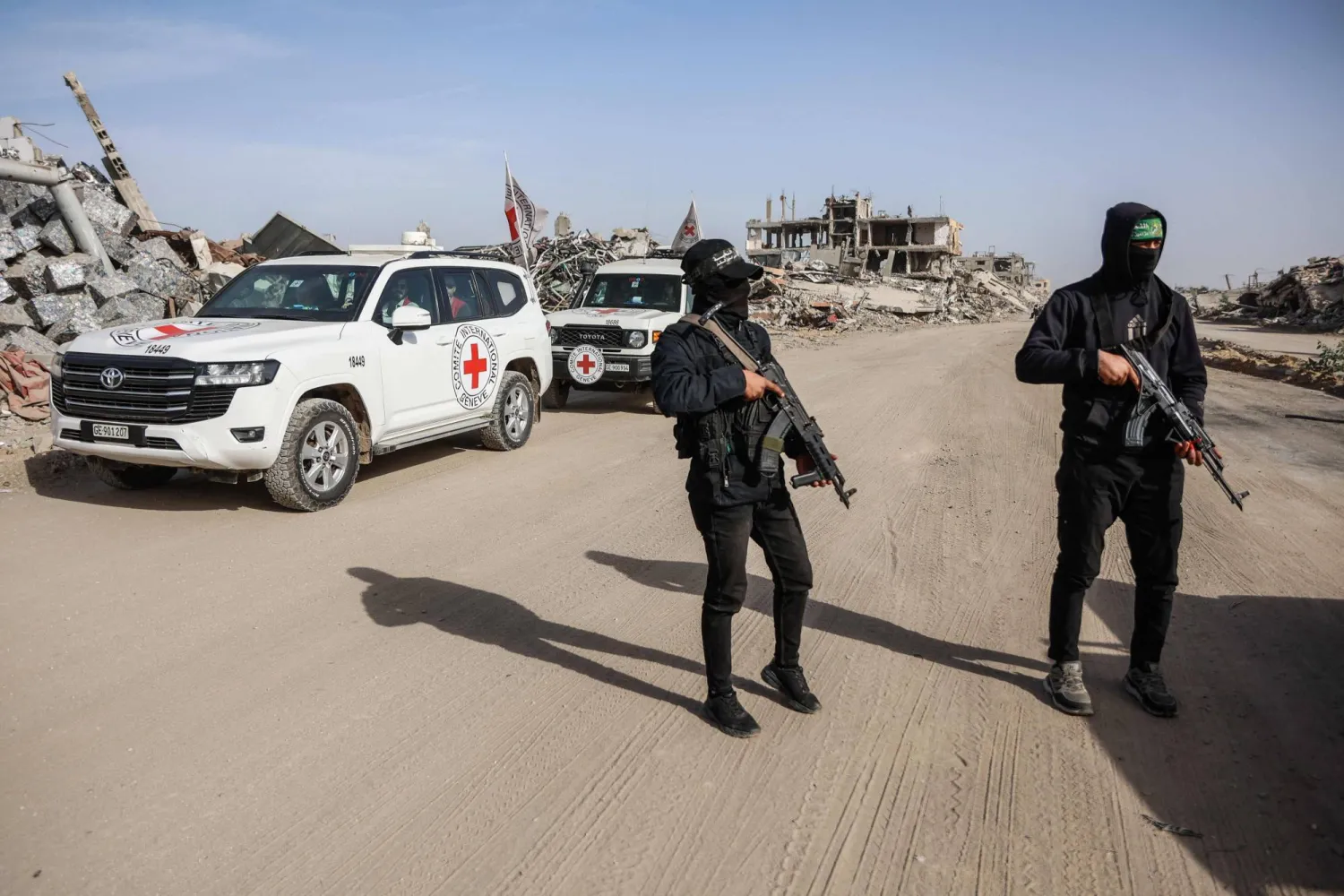Palestinian sources closely associated with the leadership of the Al-Qassam Brigades, the armed wing of Hamas in Gaza, have disclosed new details about the Al-Aqsa Flood attack on Oct.7, 2023.
This assault, which altered the landscape of the region, unfolded a new era with endless possibilities.
The surprise attack launched by Hamas resulted in the death of over 1,200 Israelis and the abduction of more than 200 others in settlements, kibbutzim, and military sites in the Gaza envelope.
In response, Israel claims to have killed a significant number of perpetrators of Al-Aqsa Flood, totaling at least 1,500 members of Hamas.
Additionally, Israel has reported the killing of over 23,000 Palestinians in its ongoing retaliatory war in Gaza.
The Al-Aqsa Flood operation began with just 70 fighters, launching a surprise attack along the entire Gaza Strip border, from north to south, Palestinian sources told Asharq Al-Awsat.
They crossed the Israeli border by strategically exploding prepared explosives to breach the thick walls of the Gaza-Israel barrier.
Additionally, they used gliders and parachutes to position fighters behind, above, and around Israeli sites.
Sources reveal that those involved in the operation were selected from Hamas’ “Elite Unit” across various areas in Gaza, having undergone extensive training over the years.
The plan to infiltrate settlements in Gaza’s envelope is not new, originating before the 2014 war and revisited after the 2021 “Sword of Jerusalem” battle.
After receiving confidential training, elite members pledged secrecy and refrained from discussing plans, even though they were unaware of any clear attack plan.
Their training focused solely on infiltrating settlements.
Sources reveal that many brigade leaders in various Gaza areas were unaware of attack details or plans, while some had limited information about their tasks.
This secrecy was part of a security plan to prevent leaks to Israeli intelligence, which later admitted to failing to prevent the Oct. 7 attack.
The decision and timing of the attack were reportedly made by only five individuals: Yahya Sinwar, Hamas leader in Gaza; Mohammed al-Deif, leader of the Al-Qassam Brigades; Mohammed Sinwar (Yahya’s brother), wanted by Israel and a key assistant to al-Deif.
The other two individuals are Rouhi Mushtaha, a Hamas leader close to Sinwar, and Ayman Nofal, a close associate of al-Deif and former head of Al-Qassam Brigades’ intelligence, assassinated by Israel in the current war.
According to sources, the officials responsible for planning the operation informed Al-Qassam Brigades’ unit leaders about the preparations and the attack plan, excluding the exact timing.
They were notified three days before final readiness, meeting with regional brigade leaders who were assigned tasks without specifying the “point of no return.”
Brigade leaders then prepared their selected forces.
Ayman Siyam, the leader of the Gaza rocket unit (also assassinated during this war), received instructions to launch hundreds of rockets simultaneously with the attack.
The sources explained that Oct. 7 was chosen based on reports of complete calm on the borders.
The decision-makers concluded on Friday that Saturday morning would be the most suitable time (Israel’s day off).
They waited until midnight on the eve of Oct.7 and then gave the order to prepare.
Field commanders and elite forces received instructions and began moving in the early hours, marking the start of the operation.
The secrecy was also extended to the political leaders of Hamas.
According to sources, Hamas leaders received a briefing just hours before the operation, instructing them to go into hiding.
Senior leaders, including Ismail Haniyeh and Saleh al-Arouri, were informed of an impending attack but received no specific details or timing until a few hours before.
The primary plan aimed for a significant attack and capturing Israeli soldiers, but unexpected events made it more extensive.
Israeli defense lines collapsed easily, leading to the immediate capture and casualties of many soldiers.
After an hour and a half, remaining elite units in Al-Qassam Brigades were mobilized to support those inside the settlements.
Other armed factions were later informed about the possibility of participating, expanding the attack as hundreds entered the settlements.
After capturing dozens of Israelis, Al-Qassam Brigades’ leadership instructed fighters to engage Israeli forces, using the opportunity to focus on gathering and hiding the abductees amid significant chaos.
Hamas and Palestinian groups, along with others, managed to move about 240 abducted individuals, including Israelis and non-Israelis, into Gaza.
About 136 of them are still there after some were exchanged earlier.
The Israeli army also found some abductees’ bodies during ongoing ground operations and brought them into Israel.
‘Al-Aqsa Flood’ : Initiated by 70 Elite Fighters, Crafted by 5 Hamas Leaders

Palestinians in Khan Yunis atop an Israeli military vehicle seized during the Al-Aqsa Flood operation (DPA)

‘Al-Aqsa Flood’ : Initiated by 70 Elite Fighters, Crafted by 5 Hamas Leaders

Palestinians in Khan Yunis atop an Israeli military vehicle seized during the Al-Aqsa Flood operation (DPA)
لم تشترك بعد
انشئ حساباً خاصاً بك لتحصل على أخبار مخصصة لك ولتتمتع بخاصية حفظ المقالات وتتلقى نشراتنا البريدية المتنوعة







